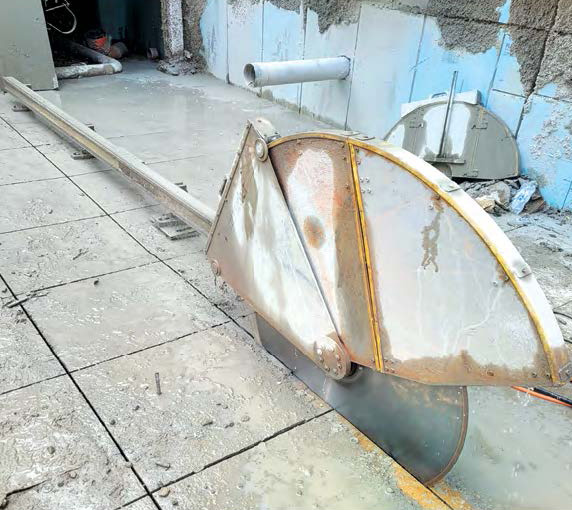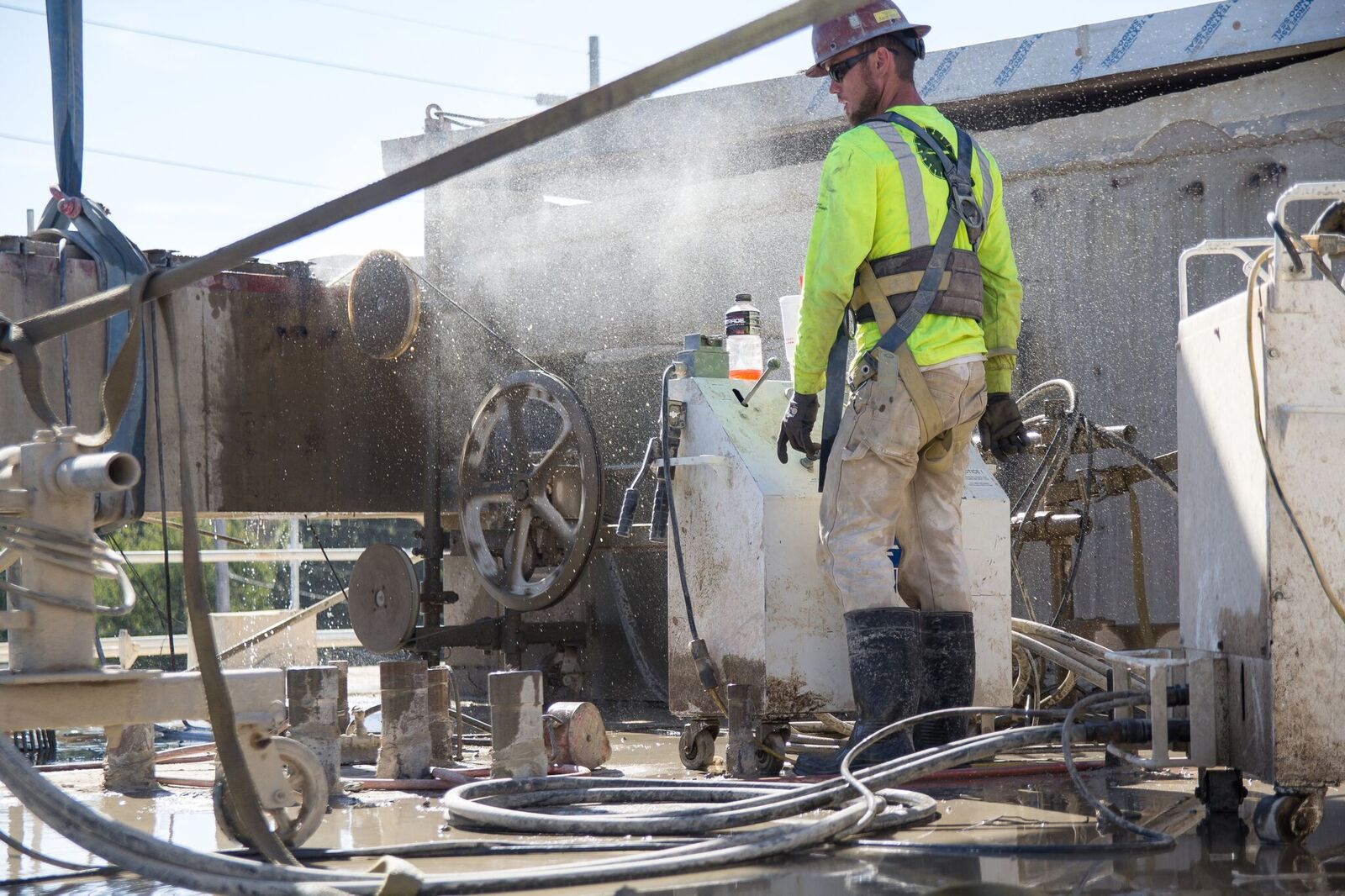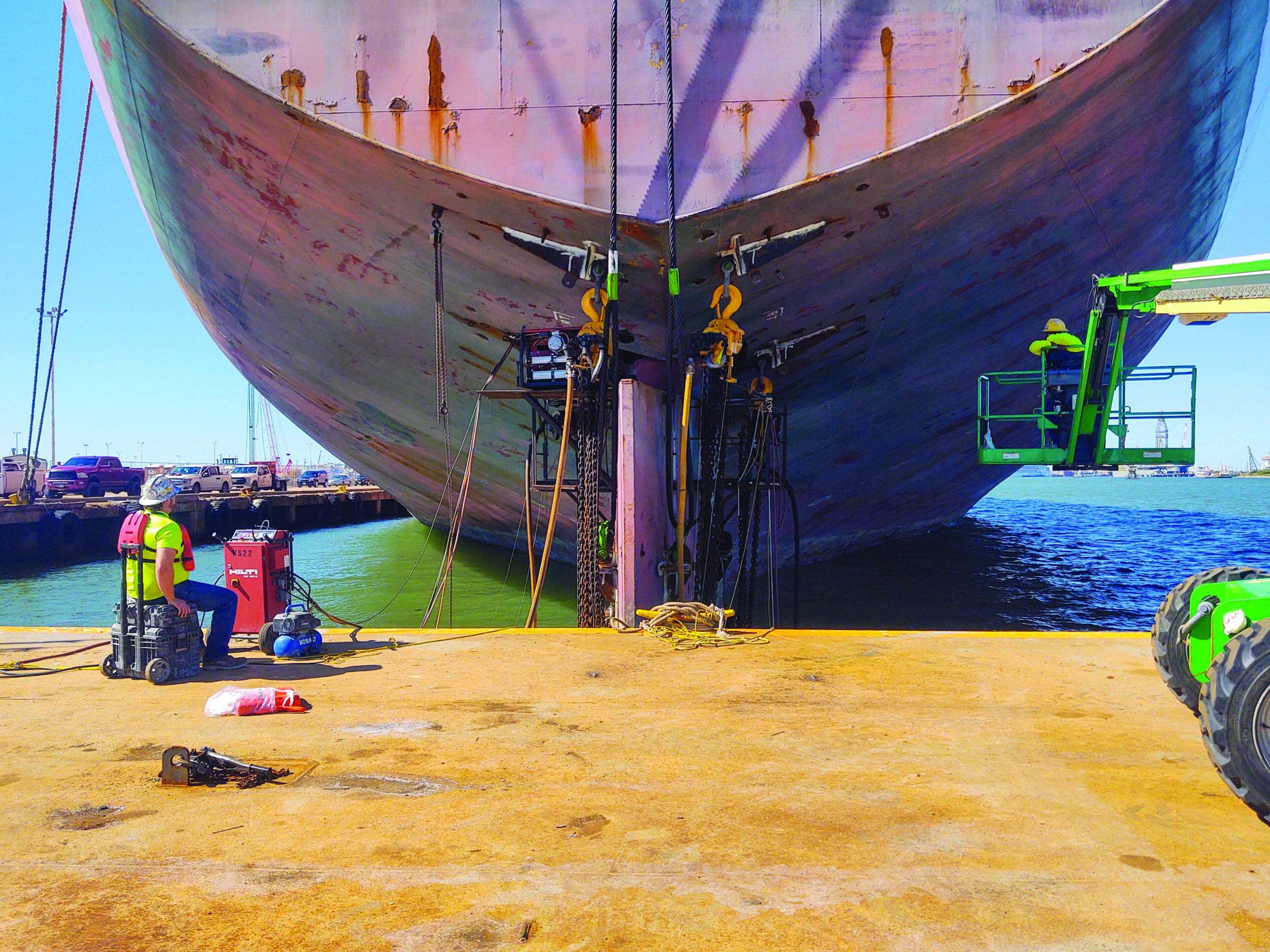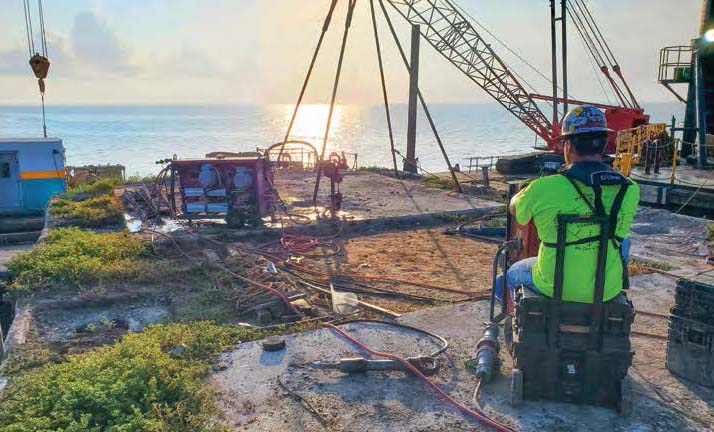
Precision Demolition Solves Time-Sensitive Problem at Energy Plant
CSDA Contractor Generates Solution in Less Than Three Weeks

First Energy’s Springdale Generating Facility in Springdale Township, PA just outside Pittsburgh, is a natural gas facility which generates power for more than half a million homes in the area. Since 2015, renovations have been underway for the generating units which began service in 2003.
As part of the renovation, a concrete foundation pad was installed to support a 150-foot high tension pole. Due to the plant’s proximity to the Allegheny River, the ground is very soft around the facility, so the construction engineer for General Contractor (GC) M. Betters Construction required that the pad be built in layers.
The top layer of the pad was 6.5 feet in diameter and 2-feet, 3-inches tall. This was the base for the pole to stand on. The middle layer is a tall foundation, measuring 12 feet by 12 feet by 4-feet, 3-inches tall. The bottom layer consists of eight 80-foot micro piles into bedrock, 9 5/8 inches in diameter.
After the pad was installed, it was discovered that the top layer of concrete never achieved compressive strength. The top layer would have to be removed and replaced without damaging the steel reinforcing and anchor bolts that ran all the way through the base and foundation, or the other two layers of concrete and reinforcement.
In September of 2019, CSDA member Matcon Diamond of Pittsburgh, PA was asked by the GC for input on how to remove and replace the top layer of the pad in a way that wouldn’t impact the reinforcing steel, the two anchor bolts or the rest of the structure. The intent was that once the bad concrete was removed, forms could be set and the concrete replaced without having to touch the anchor bolts, which were already aligned to receive the high tension pole. Additionally, engineers thought it would be prudent to limit the amount and degree of percussive demolition to mitigate any damage to the 12-square-foot slab and micro pilings.

Various solutions were discussed with the GC, two of which were dismissed in short order. One of those suggestions was that laborers could use 30# rivet buster hammers to pulverize the top layer. However, that percussive demolition could damage the bolts and be prohibitively costly and time consuming. Hydrodemolition with handheld devices was also quickly dismissed as no hydrodemolition company could guarantee the cost or time it would take to remove all the concrete.
Matcon suggested that they make a horizontal cut with a hand saw 4 inches below elevation from the top of the slab (anticipating that they would cut off no more than 1 inch of reinforcing bars) to a depth of 4 inches. The horizontal cut would be deep enough to expose the reinforcing steel, but not so deep that the anchor bolts would be scored. The next step was to snap the ring piece of concrete off to confirm the location of the vertical reinforcing bars. Next, the Matcon team set a wall saw up on top of the 12 square-foot slab and made 13 vertical cuts to a depth of 27 inches, making sure to align the cuts to protect the anchor bolts and the recently exposed reinforcing steel. Next, they used a chainsaw to chase the cut lines on the outside of the slab where the wall saw blade could not reach. This would achieve full depth cuts at those areas, 26 “finished cuts”. Then, with small percussive hammers (no greater than 30#), operators chipped apart the remaining concrete to the interface of the 12-foot foundation and the newly removed top. Finally, Matcon drilled 12 holes 5/8-inches in diameter to a depth of 12 inches into the foundation for the installation of vertical reinforcing bars.
The original plan called for a keyway where the first two layers met. Matcon made it clear to all parties that if the concrete in the keyway was removed, the integrity of the keyway would be questionable. On their advice, the engineers decided to forego the keyway and instead employ 12 vertical reinforcing bars to address any later question or possibility of horizontal sheer.
Two days after their demolition plan was approved, September 9, Matcon got to work. They performed 13 wall saw cuts to depth of 2-feet, 3-inches with a Pentruder wall saw with blades from Diamond Products and K2 Diamond; 26 chain saw cuts to a depth of 2-feet, 3-inches with a Pentruder chain saw using Max Cut brand chains and 12 hammer drilled holes to depth of 12 inches. Matcon completed their part of the work one week after work commenced, and on September 18 the job was successfully concluded.
With Matcon’s timely response and the diligence of the GC, the total impact to the job was less than a two-week delay. The concrete was replaced shortly thereafter and this time it achieved the required strength.


Matcon Operations Manager Dan Matesic said, “I personally met with the GC on site to see what we could come up with to put this mess to bed. We were chosen for this job because of our history together and our knowledge of and experience with this kind of specialty demolition. The GC told us they were very happy with the results and glad to have been able to show their customer, First Energy, that despite the issues that do indeed sometimes unfortunately result in the course of the construction business, there is no problem that can’t be solved.”
Matcon Diamond showed that seemingly impossible setbacks and problems can often be successfully repaired or tackled with diamond cutting techniques using experienced and professional CSDA contractors. Another happy customer!

COMPANY PROFILE
Matcon Diamond, Inc. is located in Pittsburgh, PA and has been in business since 1985. They have been CSDA members since 1987. Matcon has approximately 20 trucks and 50 employees. They offer a full range of sawing drilling and removal services, along with roadway joint sawing and sealing and concrete replacement. Matcon is a 2017 Concrete Openings Awards winner.
RESOURCES
General Contractor
M. Betters Constructio
CSDA Cutting Contractor
Matcon Diamond Dan Matesic
Phone: 412-481-0280
Email: matcon@matcondiamond.com
Methods Used
Wall Sawing, Hand Sawing, Chain Sawing














